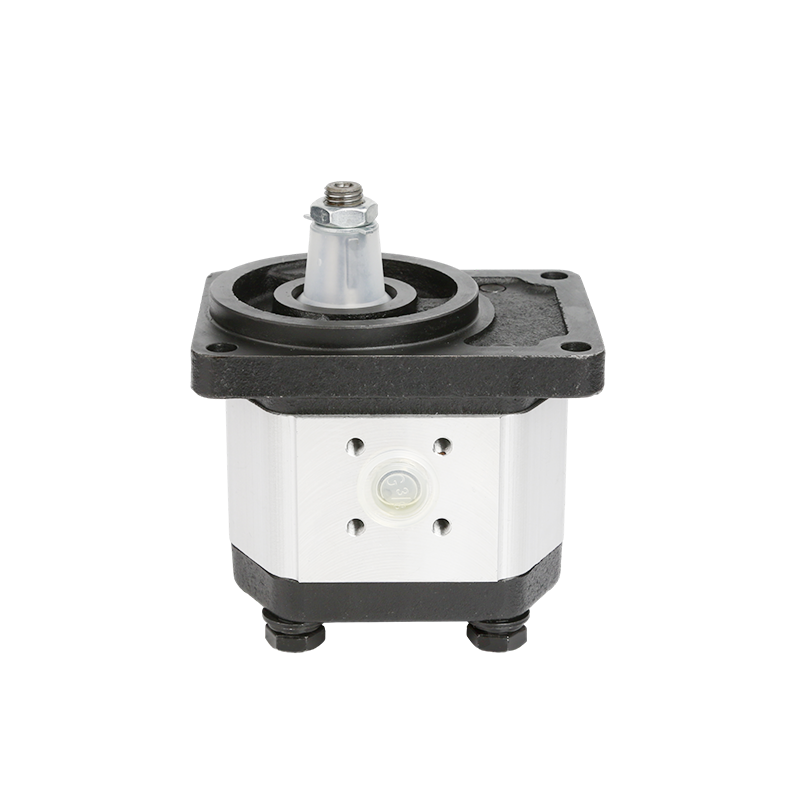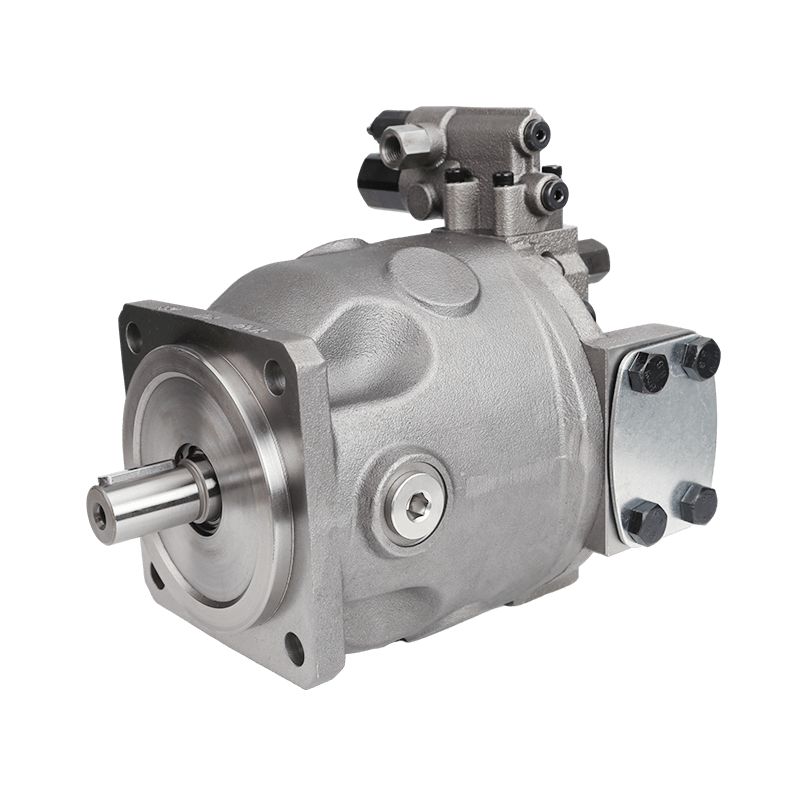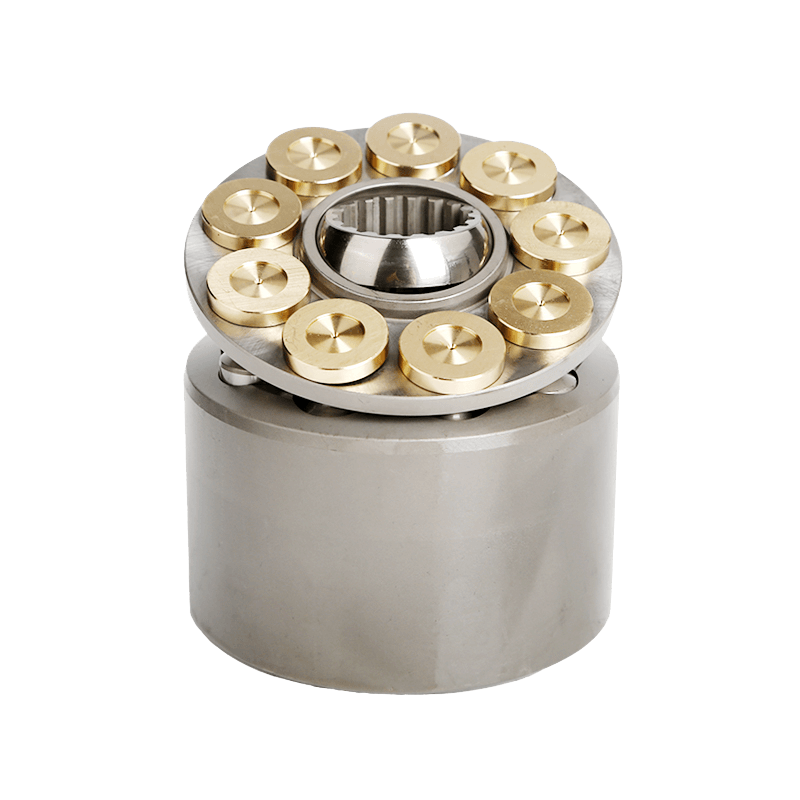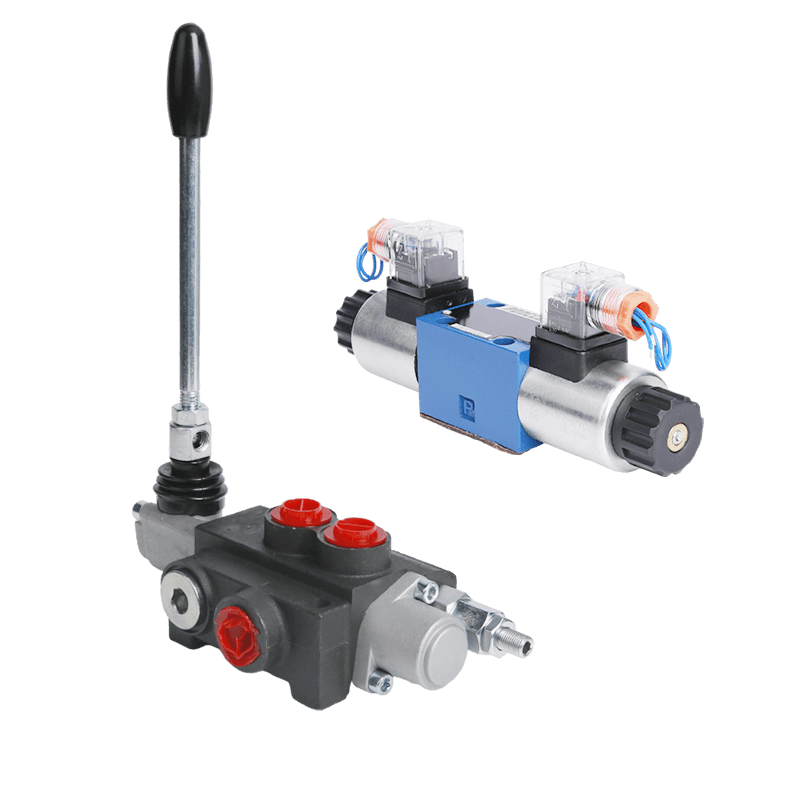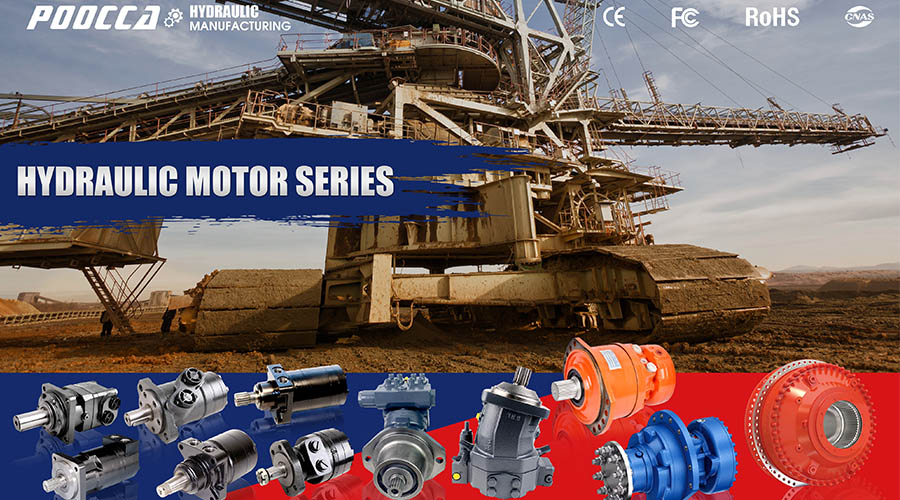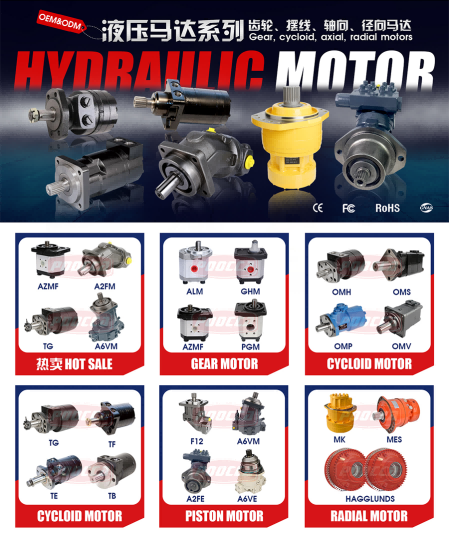What is the Role of Hydraulic Motors in Water Conservancy Engineering?
Hydraulic motors play a vital role in modern water conservancy engineering, providing efficient and reliable power sources for various applications such as irrigation systems, flood controls, and water treatment facilities. By converting hydraulic energy into mechanical energy, these devices drive pumps, gates, and other hydraulic machinery, ensuring optimal operation within the water management system. The importance of hydraulic motors cannot be overstated as they enhance the overall efficiency and durability of hydraulic systems, enabling effective management of water resources in diverse environments.
Hydraulic motors play a role, in water conservation projects by being used in various tasks such as controlling sluice gates to manage water flow in rivers and irrigation channels and powering equipment for dredging operations to maintain navigable waterways effectively They are also extensively applied in hydroelectric power generation to drive turbines that transform the flow of water into electricity due, to their versatile nature.
Importance of Hydraulic Motors
The importance of motors, in water conservation projects lies in their capability to offer strong control over motion movements. When these motors are accurately paired with systems they deliver power and speed enabling precise adjustment of water levels and flow rates. Moreover, hydraulic motors are typically smaller and lighter, than versions making them simpler to install and incorporate into structures.
Furthermore, hydraulic motors can be customized to suit uses making sure they fulfill the requirements of various water conservation projects. This personalization improves their efficiency and durability cutting down on maintenance expenses and boosting dependability. With the advancements, in technology the significance of these motors in supporting eco-friendly water management methods is projected to increase, underscoring their contribution, to upcoming water conservation efforts.
Applications in Modern Water Conservancy Projects
Hydraulic motors play a role, in water conservation initiatives with diverse applications in pumping stations to transfer water between locations and maintain steady supply and pressure levels in agricultural and urban setups. Furthermore, they are components of flood control systems, where they manage barriers and gates to regulate storm event-induced fluctuations, in the water levels thus reducing the likelihood of flooding.
Hydraulic motors play a role, in operating machinery at treatment plants where they provide the torque for mixing and agitating water or aerating it effectively. This contributes to the treatment process by managing and treating pollutants to produce water outputs. Their capacity to operate efficiently in challenging environments underscores their significance, in preserving and enhancing water quality across settings.
How to Choose the Right Hydraulic Motor for Your Project?
Choosing the motor for your water conservation project requires a thorough assessment of several important factors to guarantee top-notch performance is delivered effectively and efficiently. To start with this process effectively and swiftly align your torque and speed needs as these aspects determine the motor’s capacity and its compatibility, with the tasks, at hand. Having an understanding of the working conditions and operational settings of the project will significantly help you in making informed choices when it comes to selecting the right motor size and model for your needs.
Considering energy efficiency is important when selecting a motor due, to the increasing costs of energy and the growing focus on sustainability in today’s world. It is advisable to choose motors with efficiency ratings as they can result in cost savings, in operations over the long term. Assessing the efficiency of a motor based on its application will guarantee the choice of a unit that offers performance without consuming excessive amounts of energy.
Key Factors to Consider
Torque and Speed Requirements
In order to choose the motor, for a job it’s important to grasp the torque and speed needs of the task at hand. The motor should be able to produce torque to handle the required tasks without being too big. This can help prevent expenses and ensure performance. A thorough examination of the load and speed patterns linked to the application can help in deciding on the hydraulic motor setup.
Energy Efficiency
When choosing motors for a project it’s important to consider energy efficiency as it can lead to cost savings and support sustainability goals too! Opting for energy designs like those, with displacement or advanced control systems can help project managers meet operational needs while reducing environmental impact at the same time.
Evaluation and Selection Process
When choosing motors for a task it’s important to follow a structured process. Begin by collecting information, about the torque speed and energy needs of the application. Then take into account the factors that the motor will encounter such as temperature fluctuations, possible contact, with pollutants, and how long-lasting it needs to be.
After gathering this data; talk to manufacturers or hydraulic experts to examine the choices that fit your needs well. It’s important to compare motor types by looking at aspects, like flow capacities, pressure limits, and maintenance needs before settling on one. Taking part in this assessment will guarantee that the selected hydraulic motor can operate efficiently in the context of the water conservation initiative.
What are the Design Considerations for Optimal Performance?
Optimal performance, in hydraulic system design, requires attention to important factors, from the get-go. Hydraulic circuit design plays a role as it influences how fluid dynamics operate within the system and impacts its efficiency and effectiveness greatly. A thought-out hydraulic circuit aims to reduce energy wastage while enhancing the system’s ability to carry out tasks efficiently as needed.
Quality of materials and construction play a role, in designing motors as well. Picking the materials that can endure the working conditions – such as pressure and environmental elements – is vital, for ensuring durability and efficiency in the run. Opting for parts crafted from materials can help minimize breakdowns and upkeep needs leading to improved effectiveness overall.
Hydraulic Circuit Design
Creating a hydraulic system design requires setting up a layout that promotes fluid movement and simplifies maintenance tasks. This entails minimizing bends and points of leakage while ensuring that all parts work well together. When the system is designed properly it enables the hydraulic motor to operate at its performance levels while also cutting down any pressure and flow losses.
Material and Build Quality
Using premium materials can significantly influence how well a hydraulic motor performs and lasts over time. Motors constructed with materials are more capable of withstanding wear and tear from corrosion and fatigue caused by stress levels. Opt, for motors that adhere to industry benchmarks in terms of construction quality to minimize downtime and cut down replacement expenses. Enhance the overall efficiency of the system.
Integration with Control Systems
The combination of hydraulic motors, with control systems is an underestimated aspect of design workmanship. Designed control systems have the potential to improve the efficiency and precision of operations significantly. When hydraulic motors are aligned with contemporary control technologies like pressure sensors or variable pump drives engineers can attain control over functions thereby enhancing performance and efficiency, in energy consumption.
How Can Maintenance Practices Improve Performance?
Regular maintenance is crucial to keep motors running smoothly in water conservation projects; it helps prevent breakdowns and prolongs their lifespan by identifying issues early for prompt repairs.
Make sure to include lubrication and check components regularly during scheduled maintenance tasks to keep hydraulic motors properly lubricated and maintain peak performance levels by preventing wear and tear that could affect efficiency over time.
Scheduled Maintenance Activities
Lubrication
Ensuring hydraulic motors perform well relies heavily upon lubrication practices, in place to minimize friction and heat generation during operation for effective functioning. Adhering to a maintenance schedule tailored to the motor’s operating conditions and specifications is crucial, for extending the motor’s lifespan and optimizing its performance over time.
Component Checks
Regularly inspecting components, during maintenance procedures helps detect signs of wear or deterioration before they start affecting performance negatively. It’s crucial to examine hoses and connectors to prevent any leaks or loss of pressure that could impact the motor’s efficiency.
Predictive Maintenance Technologies
In today’s tech-savvy world technology advancements in maintenance provide benefits, for enhancing the efficiency of hydraulic motors. Engineers can make use of sensors and monitoring tools to analyze information and foresee breakdowns while scheduling maintenance when essential. This proactive strategy reduces downtimes. Promotes seamless operations resulting in an improved system performance overall.
Applying upkeep methods and taking into account design standards centered on motors in water conservation engineering work can substantially enhance the performance and durability of these crucial elements.
What are the Latest Innovations in Hydraulic Motor Technology?
Smart Hydraulic Systems
Advancements, in hydraulic motor technology, have progressed to the point where smart hydraulic systems can now monitor themselves and make real-time adjustments as needed. These systems use sensors and advanced algorithms to enhance the performance of motors by adjusting to operational conditions continuously. The analysis of pressure levels and flow rates along with temperature variations, in time allows these smart systems to respond effectively to changing conditions and load demands while ensuring optimal performance is maintained over time. The combination of these technologies helps boost effectiveness by cutting down on energy wastage and enhancing the speed of response, in systems while also reinforcing the importance of motors, in water conservation efforts.
IoT and Digital Integration
The Internet of Things (IoT) has transformed how hydraulic motors are incorporated into systems by adding features to them so operators can remotely collect and analyze data for predictive maintenance and informed decision making This digital integration not only boosts operational efficiency but also offers a clearer view of system performance by providing information, about motor condition and wear Furthermore IoT equipped hydraulic motors can interact with other parts of water conservation systems improving cooperation and effectiveness throughout the hydraulic network.
How Do External Conditions Impact Motor Performance?
Environmental Considerations
The performance of motors used in water conservancy applications is greatly impacted by the surrounding conditions such, as temperature and humidity levels and exposure to contaminants that may be present in the environment they operate in. Factors like elevated temperatures can result in the degradation of fluids which in turn affects lubrication and can cause increased wear and tear, on the motor components. Therefore it is important to use motors that are designed to withstand the environmental conditions they will encounter to overcome these challenges and improve their efficiency in the long run.
Adaptation to Variable Loads
Hydraulic motors, in water conservancy projects, need to be able to handle changing loads since flow demands can vary due to operational factors, in water systems. By using displacement technology in their design elements hydraulic motors can adapt their output according to real-time needs ensuring efficiency remains high when faced with load fluctuations. This flexibility does not decrease energy usage. Also promotes the sustainability objectives of contemporary water management initiatives.
Why Should You Choose POOCCA for Your Hydraulic Motor Needs?
POOCCA stands out as a leading provider of hydraulic motors tailored for water conservancy engineering. Their range of high-performance hydraulic motors is engineered to meet the rigorous demands of modern hydraulic systems while prioritizing efficiency and reliability. POOCCA’s commitment to using advanced technology, such as smart systems and IoT integration, ensures that their hydraulic motors are equipped to handle the complexities of varied applications, from flood control to irrigation. Furthermore, POOCCA emphasizes customer support and expertise throughout the selection process, helping clients navigate their hydraulic motor choices to find optimal solutions for their specific engineering needs.
Conclusion: Achieving Optimal Hydraulic Motor Performance
To excel in hydraulic motor performance, within water conservancy projects requires a grasp of progressions and external factors along with meticulous motor selection processes. Keeping up to date with the developments, in hydraulic systems and IoT integration enables industry experts to utilize state-of-the-art solutions to improve operational efficiency significantly. Moreover, to ensure longevity and efficiency of motors in the run it is imperative to take factors into account as well as ensure motors can adjust seamlessly to varying loads.
Implementing effective maintenance practices, such as scheduled lubrication and predictive maintenance technologies, can further improve motor performance and reliability. Ultimately, choosing the right hydraulic motor, such as those offered by POOCCA, and integrating it into smart, adaptive hydraulic systems will play a critical role in promoting sustainability in water management. In an era where efficiency and efficacy are paramount, collectively addressing these factors will ensure that hydraulic motors continue to serve as the backbone of water conservancy engineering initiatives.

